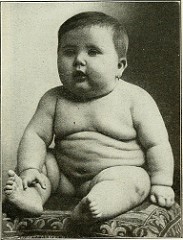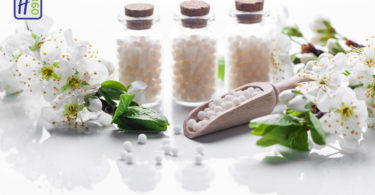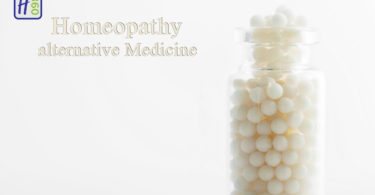Abstract: Incidence of hypothyroidism in India is high and significant problem is that it is not being adequately controlled in the country at present. Neglected or ill treated hypothyroidism leads to neuro development delay in neonates, infants, toddlers and school going children. Homoeopathy can play an important role in management of hypothyroidism in early childhood.
Keywords: Hypothyroidism, Congenital Hypothyroidism, Acquired hypothyroidism, Iodine deficiency, Homoeopathy, Endocrine Disorder.
Introduction
Hypothyroidism is a common endocrine disorder resulting from deficiency of thyroid hormone. Usually presenting with low levels of Thyroxine (T4) levels and high/low levels of TSH. Hypothyroidism commonly manifests as a slowing in physical and mental activity but may be asymptomatic. Inadequately or untreated Hypothyroidism in pregnant females can compromise to fetal neurocognitive development.
Epidemiology
It is the most common thyroid disorders in India, affecting one in ten adults. Prevalence of hypothyroidism in India is 11%, compared with only 2% in the UK and 4·6% in the USA.
In a clinic-based study from Mumbai, congenital hypothyroidism is common in India, the disease occurring in 1 out of 2640 neonates, when compared with the worldwide average value of 1 in 3800 subjects. Out of 800 children with thyroid disease, 79% had hypothyroidism. Common causes of hypothyroidism in these children were thyroid dysgenesis, dyshormonogenesis, and thyroiditis.
In another study About 14,762 children from all over India were studied, about 23% of subjects had a goiter.
Earlier iodine deficiency was blamed to be a cause of hypothyroidism, but disease is still prevalent, despite the promotion of iodised salt since 1983 when the national goiter control programme launched in 1962 was revised. The Central Council of Health in 1984 took a historic decision to iodize the entire edible salt in a phased manner by 1992 and included in the Seventh Five Year Plan (1985-1990) of Government of India. Environmental factors other than iodine deficiency might play a part in hypothyroidism in India. Goitrogens and exposure to cyanogenic compounds, unregulated use of pesticides, unclean drinking water and exposure to industrial pollutants like resorcinol and phthalic acid are attributable factors to hypothyroidism.
Most common cause of hypothyroidism in pregnant females is the autoimmune disorder known as Hashimotos thyroiditis. The foetus and the infants are neurologically vulnerable due to the incomplete brain development in humans at birth. Children born to women with hypothyroxinemia had significantly higher ADHD symptom scores than children born to mothers with normal thyroid hormone levels during pregnancy.
Classification of hypothyroidism
Hypothyroidism in children can be classified as:
1. Congenital Hypothyroidism
2. Acquired Hypothyroidism
1. Congenital Hypothyroidism
Congenital hypothyroidism is 30 times more frequent in newborns with Down syndrome than in the population of healthy children. The deficiency of thyroid hormones is called hypothyroidism and when this deficiency present in new born babies that is called congenital hypothyroidism.
Congenital hypothyroidism is also associated with increased incidence of birth defects, specifically congenital heart disease. If Congenital Hypothyroidism remains untreated until 3 months after birth; the result would be the mental and physical retardation of the child. It can produce devastating intellectual consequences. Brain development is absolutely dependent on normal thyroid hormone levels. [7] Congenital hypothyroidism is a relatively common condition, occurring in approximately 1/4000 births. It is twice as common in girls as in boys.

Aetiology
The causes of congenital hypothyroidism include the following:
1. Thyroid dysgenesis (85%): usually sporadic; resulting in thyroid aplasia/hypoplasia, ectopic thyroid (lingual/sublingual).
2. Thyroid hormone biosynthetic defect (15%): hereditary, e.g. Pendred syndrome, Iodine deficiency (rare UK; but common worldwide).
3. Congenital TSH deficiency (rare): associated with other pituitary hormone deficiencies.
2. Acquired hypothyroidism
Acquired Hypothyroidism adversely affects growth and school performance. A relatively common condition with an estimated prevalence of 0.1-0.2% in the population. The incidence in girls is 5-10 times greater than boys.
Aetiology
Acquired hypothyroidism may be due to a primary thyroid problem or indirectly to a central disorder of hypothalamic pituitary function.
1. Primary hypothyroidism (raised TSH; low T4/T3)
- Autoimmune (Hashimoto’s or chronic lymphocytic thyroiditis).
- Iodine deficiency: most common cause worldwide.
- Subacute thyroiditis.
- Drugs (e.g. amiodarone, lithium).
- Post-irradiation thyroid (e.g. bone marrow transplant total body irradiation).
- Post-ablative (radioiodine therapy or surgery).
2. Central hypothyroidism (low serum TSH and low T4)
- Hypothyroidism due to either pituitary or hypothalamic dysfunction.
- Intracranial tumours/masses.
- Post-cranial radiotherapy/surgery.
- Developmental pituitary defects (genetic, e.g. PROP-1, Pit-1 genes):
Isolated TSH deficiency; multiple pituitary hormone deficiencies.
Signs & symptoms of hypothyroidism in children
Neonates & Infants
1. Prolonged yellowing of skin and sclera of eye (Jaundice)
2. Constipation
3. Poor feeding
4. Hoarse cry
5. Excessive sleepiness
6. Dry skin
7. Coarse facies
8. Delayed neurodevelopment
Toddlers and school graders
1. Shorter than average height
2. Shorter than average limbs
3. Bradycardia
4. Delayed puberty
5. Brittle hair
6. Permanent teeth develop later
7. Facial features puffy
8. Increased weight
9. Constipation
10. Mental slowness, poor school performance.
11. Easily fatigue
12. Dry skin
13. Cold intolerance
Diagnosis
Low FT4, High TSH (Primary, antibodies estimation suggested)
Low FT4, Low TSH (Secondary or Tertiary, TRH stimulation test, MRI suggested)
In infants, if the serum total T4 is less than 85 nmol/L (< 7 mg/dL), with TSH more than 40 mIU/L, congenital hypothyroidism is likely. [9] If total T4 is low, and serum TSH is not elevated, Thyroxine-binding globulin (TBG) deficiency, central hypothyroidism, or euthyroid sick syndrome should be considered, and repeat testing may be needed.
Serum free T4 concentration is normal in TBG deficiency.
Normal TSH (< 20 mIU/L) in the presence of low total T4 and free T4 concentrations suggest secondary or tertiary causes of hypothyroidism.
Homeopathic approach
Hypothyroidism being an endocrine disorder, resulting from the deficiency of thyroid hormone in the body. Hormones are present in small quantities and still they affect our body and bodily functions to a vast degree, similarly homoeopathic medicines having less concentration of crude drug substance and have dynamicity in its action can alter the state of disease or dynamically deranged vital force to regain the state of health.
While treating a case of hypothyroidism one should pay attention to its cause, so that we can identify the miasm and prescribe accordingly. Intrauterine history also plays a major role in case taking of such cases and should be thoroughly investigated to find out the most characteristic symptoms & thus helping in indicating the similimum.
There are various homoeopathic medicine which have a good sphere of action on thyroid gland, Mostly mineral group remedies are indicated in various thyroid disorders like Aurums, Barytas, Calcareas, Flourides, Iodums, Kali’s, Magnesiums, Mercurials, Phosphorus, Sulphur etc. Although other groups of remedies can be prescribed based on the totality of symptoms.
Homoeopathic Therapeutics
Baryta carbonica: This remedy brings aids to scrofulous children, especially if they are backward mentally and physically, are dwarfish, do not grow and develop swollen abdomen, take cold easily, and then have swollen tonsils. Offensive foot sweats, very weak and weary, must sit or lie down or lean on something. Loss of memory, mental weakness. Lost confidence in himself. Confusion.
Calcarea phosphorica : Idiocy of children, agile cretinism. It affects the Nutrition of bones and glands; bones become soft, thin and brittle; it promotes ossification of bones in non union of fractures. Girls slow in maturing. Retarded dentition. Peevish, restless and fretful. Glands are swollen. Anaemic children who are peevish, flabby, have cold extremities and weak digestion; they start convulsively when lying on back amelioration lying on side.
Kali carbonicum : Sensitive to every atmospheric change, and intolerance of cold weather. Hypothyroidism. Early morning aggravation is very characteristic. Despondent. Alternating moods. Very irritable. Full of fear and imaginations. Never quiet or contented. Obstinate and hypersensitive to pain, noise, touch. Great dryness of hair; falls out. Large, difficult stools, with stitching pain an hour before.
Natrum muriaticum : Goitre. Great weakness and weariness. Dry mucous membranes. Great debility; most weakness felt in the morning in bed. Coldness. Consolation aggravates. Eyes feel bruised, with headache in school children. Eye lids heavy. Face is oily, shiny, as if greased. Sweats while eating. Constipation; dry stool, crumbling. Palms hot and perspiring.
Thyroidinium : In myxoedema and cretenisim it’s effects are striking. Infantile wasting. Rickets. Delayed union of fractures. Arrested development in children. Improves the memory. Goitre. Excessive obesity. Has a powerful diuretic action in myxoedema and various types of oedema. Acts better in pale patients, rather than those of high color.
Conclusion
The foetus and the infants are neurologically vulnerable due to the incomplete brain development in humans at birth. Untreated Hypothyroidism should be taken as a priority in neonates and pregnant females. Decreased production of thyroid hormone has significant impact on growth & development. If timely managed in neonates and pregnant females can prevent irreversible mental retardation in a large number of newborns.
Hypothyroidism in pregnant females, infants and children’s should be treated cautiously and sudden cessation of conventional treatment is not advisable to avoid growth and developmental delay. We can reduce the dosage of levothyroxine (most commonly used drug in conventional treatment) over the period of time with improvement in signs and symptoms after the prescribing the similimum. Homoeopathic medicines can play a significant role in controlling hypothyroidism in neonates, infants & children.
References
1. Bagcchi S. Hypothyroidism in India: more to be done. Lancet Diabetes Endocrinol. 2014 Oct;2 (10):778. doi: 10.1016/S2213-8587(14)70208-6. PMID: 25282085.
2. Desai PM. Disorders of the Thyroid Gland in India. Indian J Pediatr. 1997;64:1120.
3. Marwaha RK, Tandon N, Gupta N, Karak AK, Verma K, Kochupillai N. Residual goitre in the postiodization phase: Iodine status, thiocyanate exposure and autoimmunity. Clin Endocrinol (Oxf) 2003;59:672–81.
4. http://saltcomindia.gov.in/NIDCCP_Iodised_Program.html. Accessed on 24.11.2020
5. http://www.thyroid.org/%20thyroid-disease-pregnancy. Accessed on 24.11.2020
6. Najoua Lassoued, Salmane Ouannes, Sobhi Ghanmi, Hachmi Ben Hammouda, Hbib Soua & Mohamed Taher Sfa. Congenital hypothyroidism in children with down syndrome. Endocrine Abstracts (2017) 49 EP1238 | DOI: 10.1530/endoabs.49.EP1238
https://www.endocrine-abstracts.org/ea/0049/ea0049ep1238. Accessed on 24.11.2020
7. Paul K Vinod, Bagga Arvind. Ghai Essential pediatrics. Eight edition. CBS publisher & distributors Pvt Ltd. Pg no. 516-520
8. Tasker C Robert, McClure J Robert, Acerini L Carlo. Oxford handbook of pediatrics. Second edition. Oxford medical publications 2013. Pg no. 422-424
9. Zwaveling-Soonawala N; van Trotsenburg AS; Verkerk PH. The severity of congenital hypothyroidism of central origin should not be underestimated. J Clin Endocrinol Metab. 2015; 100(2):E297-300 (ISSN: 1945-7197)
10. Boericke W. Boericke’s New Manual of Homoeopathic Materia Medica with Repertory, Third revised and augmented edition based on ninth edition, B. Jain publishers (p) Ltd. 2007
11. Phatak S. R. Materia Medica of Homoeopathic medicines, Second edition revised and enlarged.B. Jain publishers (p) Ltd.
About the Author
Dr. Geetanjali
M.D Scholar, Department of Practice of Medicine
Bakson Homoeopathic Medical College & Hospital, Greater Noida, U.P
Searching Tags For This Article: Hypothyroidism classification, Hypothyroidism Signs, Hypothyroidism symptoms, Hypothyroidism treatment, Hypothyroidism disease, homeopathic treatment for Hypothyroidism.





